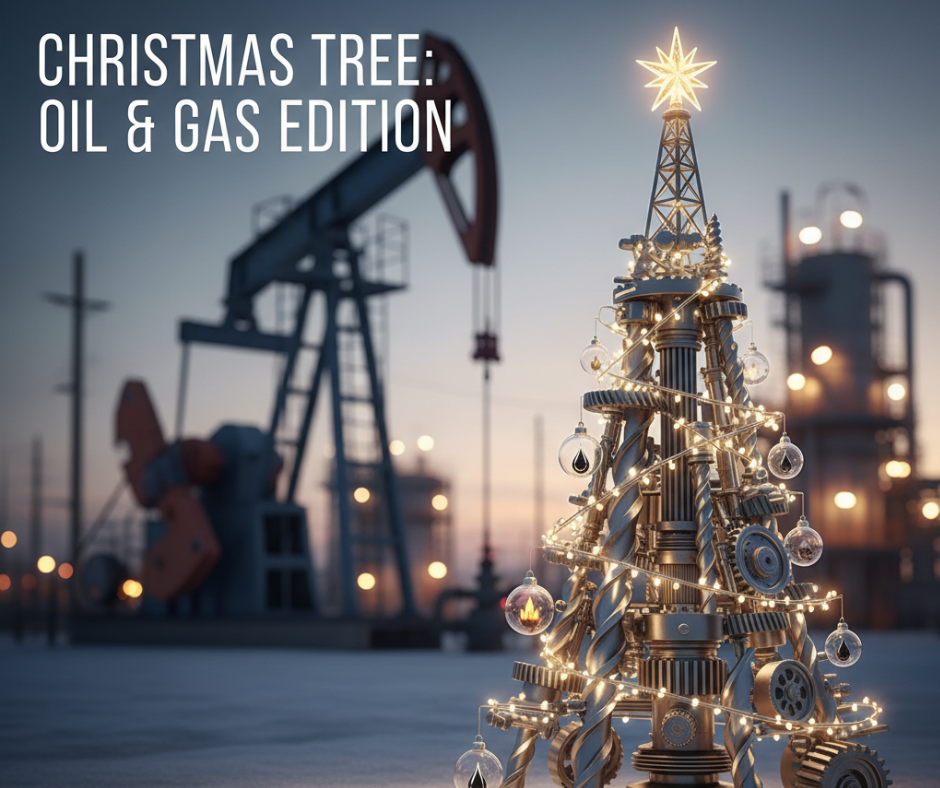When most people hear “Christmas tree,” they think of a decorated evergreen cherished during the holiday season. However, in the oil and gas industry, a “Christmas tree” refers to a critical piece of equipment used in oil and gas wells. This specialized assembly plays an essential role in controlling and managing the flow of hydrocarbons from underground reservoirs to the surface.
This article explores everything about the Christmas tree in oil and gas — what it is, how it works, its components, types, functions, and why it’s vital for safe and efficient oil and gas production.
What is a Christmas Tree in the Oil and Gas Industry?
In oil and gas terminology, a Christmas tree is a complex assembly of valves, spools, gauges, and fittings installed on the wellhead after drilling is completed. It regulates, monitors, and controls the flow of oil or gas extracted from the well.
The name “Christmas tree” comes from its visual resemblance to a decorated tree, with multiple branches (valves and equipment) extending outward, reminiscent of ornaments and lights on a traditional holiday tree.
Christmas trees can be found on both surface wells (onshore or offshore platforms) and subsea wells (located underwater on the seafloor). Their design and complexity vary depending on the well conditions, location, and production requirements.
Purpose and Functions of a Christmas Tree
A Christmas tree serves several critical functions during oil and gas production:
-
Flow Regulation: It controls and adjusts the flow rate of hydrocarbons coming out of the well.
-
Pressure Control: Maintains safe pressure levels in the well to avoid dangerous blowouts.
-
Safety Shutoff: In emergencies, it can quickly shut off production to protect workers, equipment, and the environment.
-
Well Monitoring: Equipped with gauges and sensors to continuously track pressure and other operational parameters.
-
Injection Points: Allows for chemical injections or gas/water injection to enhance production or maintain reservoir pressure.
-
Access for Maintenance: Provides ports for well intervention, testing, and servicing without shutting the entire well down.
By managing these aspects, the Christmas tree ensures that oil and gas extraction is safe, efficient, and economically viable.
Key Components of a Christmas Tree
A typical Christmas tree assembly consists of several valves and fittings, each serving a specific function:
-
Master Valve: The main valve at the base, controlling the overall flow from the well.
-
Wing Valves: Side branch valves managing flow to pipelines or production facilities.
-
Swab Valve: Allows tool access into the wellbore for intervention or maintenance.
-
Choke Valve: Regulates the flow pressure and rate by restricting the passage.
-
Pressure Gauges: Display current pressure readings for monitoring system status.
-
Safety Valves: Surface and subsurface valves designed to automatically shut off flow in emergencies.
-
Chemical Injection Ports: Facilitate the injection of chemicals to prevent corrosion or hydrate formation.
These parts combine to create a versatile and robust control system necessary for modern oil extraction.
Types of Christmas Trees
Christmas trees vary depending on the well type and environment:
Surface Trees
Installed above ground on land or offshore platforms, surface trees are easier to access and maintain. They are the conventional design with vertical valve arrangements.
Subsea Trees
Used for underwater wells on the seabed, subsea trees can be vertical or horizontal, designed to withstand high-pressure deepwater conditions. Maintenance requires remotely operated vehicles (ROVs) or specialized equipment.
Directional and Horizontal Trees
Designed for wells drilled horizontally or at angles, they facilitate the flow from non-vertical wellbores efficiently.
Dual-Completion Trees
Used for wells producing from two reservoirs simultaneously, allowing independent control and monitoring.
Why is the Christmas Tree Essential?
Without a Christmas tree, controlling the production of hydrocarbons would be hazardous and inefficient. It is fundamental for:
-
Worker and Environmental Safety: Prevents blowouts and uncontrolled releases.
-
Production Efficiency: Allows operators to optimize flow rates and maximize recovery.
-
Regulatory Compliance: Meets industry standards for safe operations.
-
Well Longevity: Proper pressure and flow management help preserve reservoir integrity.
Maintenance and Challenges
Christmas trees operate under harsh conditions—extreme pressure, temperature, and corrosive fluids. Regular maintenance, inspections, and testing are vital to:
-
Ensure valve integrity and proper functioning.
-
Detect and repair leaks or wear.
-
Avoid costly downtimes and accidents.
Maintenance complexity increases for subsea trees due to difficult access.
Read More: How to Grow a Christmas Tree: A Comprehensive Guide for Beginners and Hobbyists
Summary
A Christmas tree in oil and gas is a crucial assembly of valves and equipment installed at the wellhead to manage the complex process of hydrocarbon extraction. Its functions range from flow control to safety shutdowns and enable efficient, safe, and controlled oil and gas production.
Understanding this specialized equipment highlights the engineering marvel behind every barrel of oil and cubic foot of gas we use daily.



Add a Comment